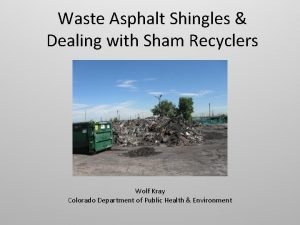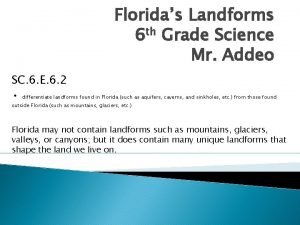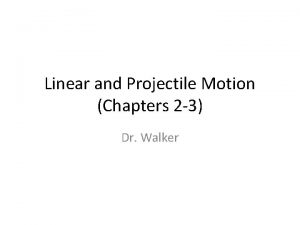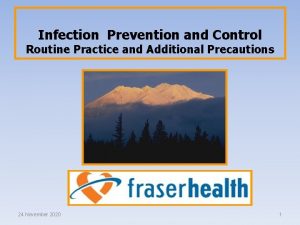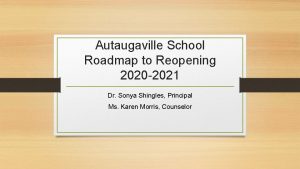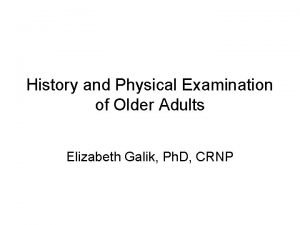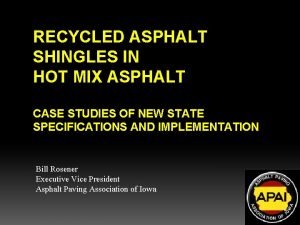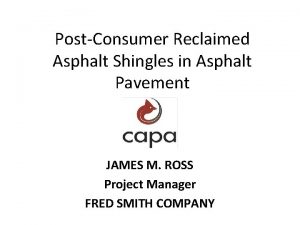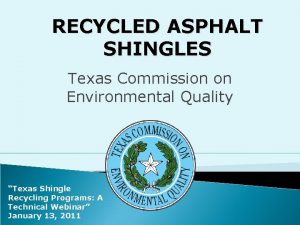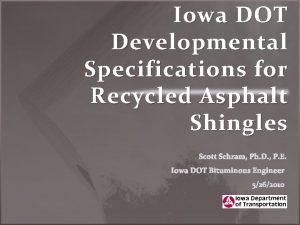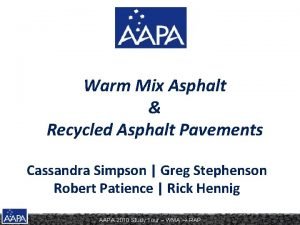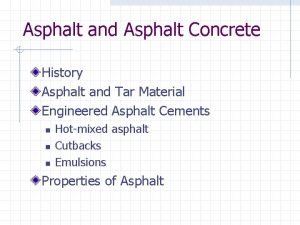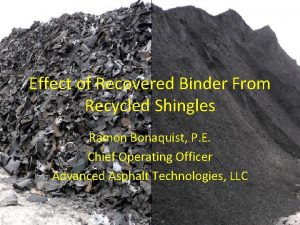Recycled Asphalt Shingles Floridas Perspective James A Musselman












- Slides: 12

Recycled Asphalt Shingles Florida’s Perspective James A. Musselman, P. E. State Bituminous Materials Engineer Florida Department of Transportation

Hot Mix Asphalt (HMA) Recycling • Started in 1977: – Contractor, FDOT, FHWA initiative – Multiple pilot projects – Good short-term performance • 1980: Recycled HMA specifications developed as a standard practice

Some Historical Data on RAP • FDOT usage since 1980: – 150 million tons HMA – 33 million tons RAP • Resource savings: – 31. 7 million tons aggregate – 1. 7 million tons asphalt binder • 2012/2013: – RAP in 85% of all HMA – Average RAP content: 25% • Good performance history with RAP – Transportation Research Record 2294

Recycled Tire Rubber • 1988 Legislation – Florida Statute 336. 044 – Contracted research – Multiple pilot projects • 1994: Asphalt rubber specifications adopted • Used in friction courses and interlayers • FDOT usage since 1994: – Over 70, 000 tons of GTR – Over 7 million tires • Improved performance over unmodified asphalt

SR-16 Bradford County With ARB Without ARB

FDOT is very progressive in adopting new technologies… …but is very cautious with respect to RAS. Here’s why….

Pavement Performance • Pavements are in very good condition – < 8% of system is deficient • Cracking biggest pavement distress • Typically top-down cracking • Concerned with stiff and brittle materials

Statewide Pavement Condition 28% 26% 24% Crack 22% Ride % Deficient 20% Rut 18% 16% 14% 12% 10% 8% 6% 4% 2% 0% 95 996 997 998 999 000 001 002 003 004 005 006 007 008 009 010 011 012 013 014 1 2 2 1 1 1 2 2 2 2 19 Year

Concerns with RAS • Binder stiffness – Extremely high viscosity • RAS ~ >10 million poises (PG 125+) • New pavements ~ 15, 000 poises (PG 70) – Will it increase cracking potential? • Will a stiff base lessen the risk? • Binder availability – How much of it is really viable asphalt? • High P-200 contents • Mix design considerations – AASHTO methods are lacking • Long term performance data

Other issues • RAP surplus in Florida – Increased RAS usage = decreased RAP usage • Stockpiling methods? – With RAP? Sand? Alone? – Impact of moisture – Impact of variable RAS feeds • Manufactured waste versus tear-offs – Deleterious materials

Future? • May become an environmental/political reality – Florida has hurricanes; hurricanes damage roofs • FDOT sponsored 2012 NCAT test track sections – PG 76 -22, 20% RAP, 5% RAS – PG 76 -22, 25% RAP control • Upcoming projects with RAS test sections: – – Manufactured Waste or Tear-Offs 100% Passing the No. 4 sieve. Max 3 - 5% (by weight) or max 40 – 50 % binder replacement PG 52 -28 binder • AASHTO guidance

Thank You! Comments / Questions?
 Recycled asphalt colorado springs
Recycled asphalt colorado springs Ejemplo de sacrificio
Ejemplo de sacrificio Que eran las guerras floridas
Que eran las guerras floridas Florida landforms
Florida landforms Shingles and pomalidimide
Shingles and pomalidimide Shingles vaccine side effects
Shingles vaccine side effects Luke drops a pile of roof shingles
Luke drops a pile of roof shingles Luke drops a pile of roof shingles
Luke drops a pile of roof shingles Shingles precautions
Shingles precautions Sonya shingles
Sonya shingles Shingles medscape
Shingles medscape Shingles older adults
Shingles older adults 4 kinematic equations
4 kinematic equations
